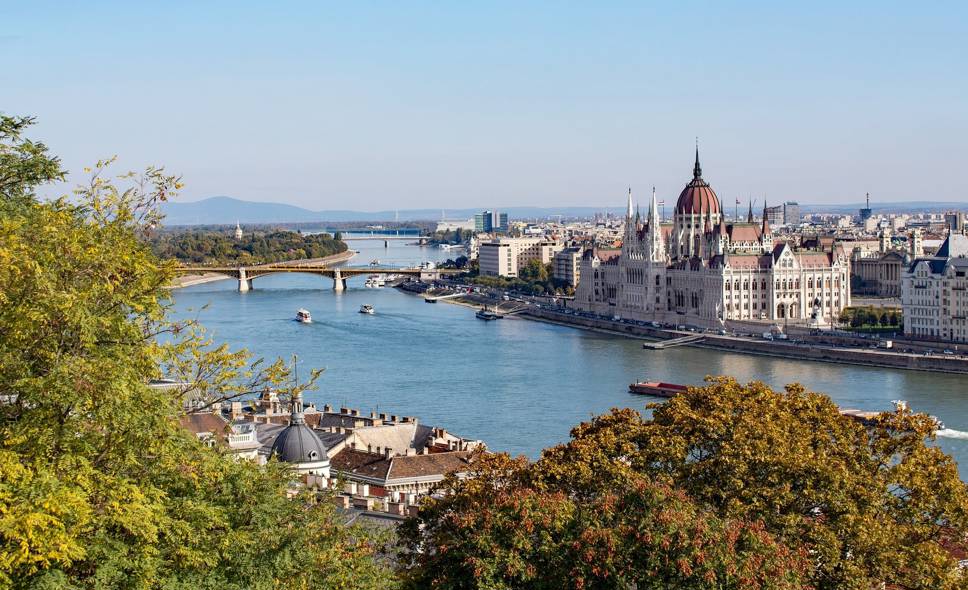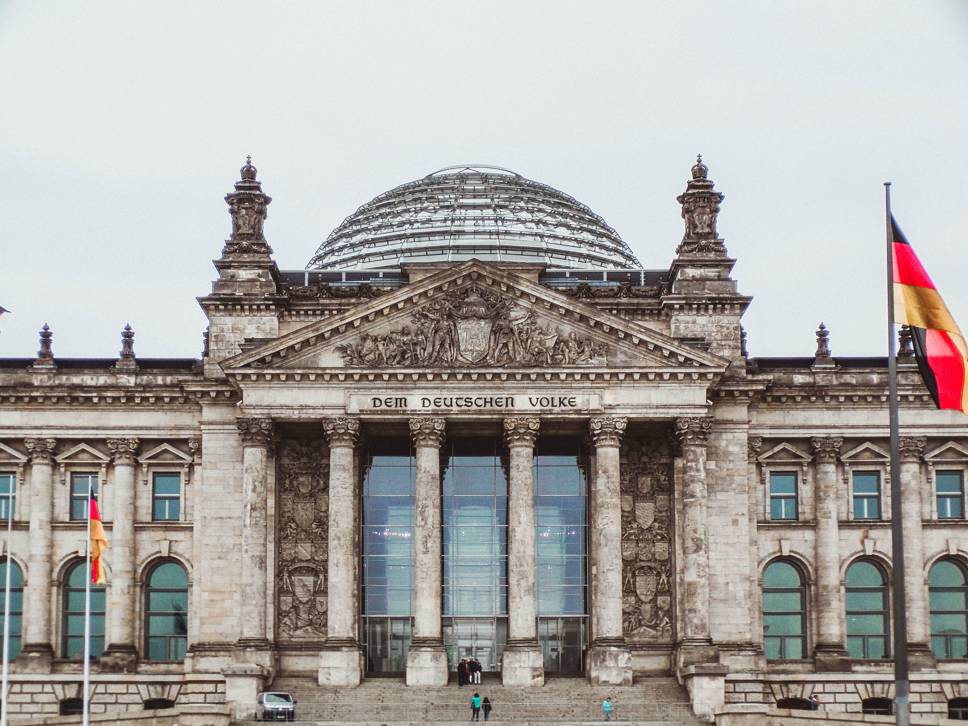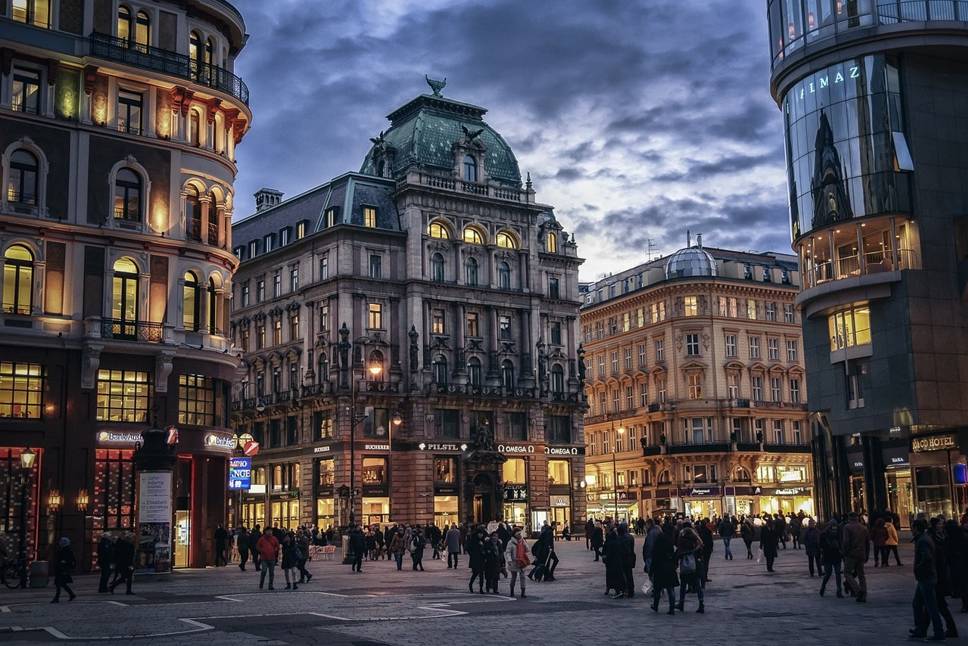Looking for ways to keep your little ones entertained when travelling?
Last minute trip ideas
5th September 2022
Best Last-Minute Trips Now the School Holidays Are Over
If you're not tied to the school holidays, why not go away outside of the traditional holiday period? There are many benefits of holidaying in “off-peak” seasons, such as the locations being less busy and prices generally being lower than in summer. Here at Stansted Express, we’ve created a guide to some of our favourite European cities that are amazing locations to visit, regardless of the season!
Budapest, Hungary

Budapest is a fascinating city comprised of two halves – Buda and Pest. Explore Buda by day and Pest by night, and discover the wonders of the Hungarian capital.
St. Stephen’s Basilica and Szent István Square
St. Stephen’s Basilica is one of the largest churches in Hungary and is dedicated to the first Hungarian king, Saint Stephen. Completed in the early 20th century, the impressive structure of the Basilica took over 5 decades to build. Climb the tower and see Budapest like you’ve never seen it before from the panoramic dome, offering you a 360o view of the city.
Once you have finished marvelling at the Basilica, wander around Szent István Square and discover the fountains which are dedicated to Saint Stephen and his wife, Gisela. You can also grab a drink and a bite to eat in the many bars and restaurants surrounding the area.
Buda Castle
Buda Castle is a medieval fortress located west of the river Danube. The castle, often referred to as the Royal Palace, once housed Hungarian royalty. However, the castle now houses museums, such as the Budapest Historical Museum and the Hungarian National Gallery.
Heroes’ Square
Heroes’ Square is a recognised UNESCO world heritage site and one of the most infamous squares in Budapest. Built in 1896 as a monument to commemorate the 1000th anniversary of the establishment of Hungary, the Square includes the 45-metre-high Millennium Monument topped with the archangel Gabriel bearing the crown of Saint Stephen and the apostolic double cross, which are both symbols of Budapest. Underneath the monument, you can see seven statues of warriors, which represent the seven tribes that established the Principality of Hungary, as well as an additional 14 statues that represent the kings and statesmen of Hungary.
Thermal baths
Budapest is known as the ‘City of Spas’ and rightly so, as the city boasts the largest collection of thermal spas in Europe. Thermal baths are fed by natural hot springs keeping the water warm, even during winter! The baths are said to have healing and medicinal properties, and have been a staple part of Hungarian culture for thousands of years. The baths are so popular that they are open daily and attract millions of tourists a year, regardless of the weather. If you aren’t feeling brave enough to bathe outside, however, don’t worry – there’s a selection of indoor thermal baths for you to visit too!
Ruin bars
Ruin bars are one of the most popular tourist attractions in Budapest, and arguably one of the best ways to spend your evenings whilst in the city. Ruin bars are exactly what the name suggests – bars that have been established in abandoned and neglected buildings. Located in the old Jewish Quarter of the city, ruin bars are one of the coolest places to relax after a busy day of sight-seeing.
Berlin, Germany

Berlin, the capital of Germany and the country's largest city, is a major hub for politics, culture, media and science. Berlin is an extremely popular tourist destination welcoming 6.3 million tourists in an average year, making it one of the most visited cities in Europe.
Museum Island
Museum Island is one of Berlin’s top attractions which is located in the centre of the city and welcomes over 3 million tourists a year. Museum Island is home to five of the top museums in Berlin, alongside housing Berlin Cathedral. Museum Island has it all – from artefacts from prehistoric and ancient civilisations in the Altes and Neues museums, to Berlin’s patriotic art collection in the Alte Nationalgalerie, to ancient and Islamic art in the Pergamon, and a large collection of historical coins and medals in the Bode Museum. As well as housing thousands of artefacts, the island itself is recognised as a UNESCO world heritage site due to its unique formation around the river Spree. Museum Island is a must-see attraction for anyone interested in history.
Berlin Wall Memorial and the East Side Gallery
Germany was once separated into two halves with a large wall named the Berlin Wall, separating the east from the west. The wall stood strong for 32 years, however, would eventually fall as a result of the peaceful revolution in 1989 when Germany would be unified once again. The Berlin Wall Memorial is an outdoor exhibition that illustrates the history of the wall, by tracing the former border of East and West Germany. Although the wall no longer exists in dividing East and West Germany, some parts of it remain. The largest and most famous stretch of the wall still exists on the bank of the river Spree and has been turned into a beautiful mural that reflects the political and social changes in Germany in 1989 and 1990. 118 artists from 21 different countries came together to paint murals on the remaining wall, making the East Side Gallery the largest open-air gallery stretching to 1316 metres wide.
Additionally, you can explore what once was no man’s land between East and West Germany by following the Berlin Wall Trail, which traces the locations of the fortifications to West Berlin. Walk, run or cycle along the Berlin Wall Trail and witness how nature has reclaimed this once inhabitable land.
Berliner Fernsehturm (Berlin's Television Tower)
Berliner Fernsehturm is an iconic symbol of the city. Formerly a TV tower, Berliner Fernsehturm stands at 368 meters tall, and offers some of the most spectacular views of the German capital. In just 40 seconds, guests are whisked up the tower to the observation deck that offers views that stretch to as far as 80km if the weather remains clear. The tower also has a revolving sphere restaurant that serves gourmet food with spectacular panoramic views of Berlin.
Vienna, Austria

Hundertwasserhaus and Kunst Haus Wien
Hundertwasserhaus is one of Vienna’s most visited buildings, attracting thousands of tourists each year to marvel at the building’s unique structure and colourful exterior. Designed by Friedensreich Hundertwasser and Joseph Krawina, the building costed over €7 million to design and build. Despite being so popular with tourists, Hundertwasserhaus’s interior has never been open to the public, as the building houses apartment complexes. However, just a few meters away from Hundertwasserhaus, you can find Kunst Haus Wien, a museum dedicated to Austrian artists and visionaries, housing the largest collection of Hundertwasser’s work. The museum was similarly designed by Friedensreich Hundertwasser, so shares the same unique designs and architecture as Hundertwasserhaus.
Prater
What once was an exclusive hunting ground for the Austrian aristocracy, was transformed into a public park. Prater has been open to the public since 1766 and has been extremely popular ever since. The year 1895 saw the introduction of the amusement area of the park, named the Venice of Vienna, including rides such as a lagoon which was said to emulate the canals of Venice. However, the amusement area has grown over time, now offering over 250 attractions to its guests. From Ferris wheels and rollercoasters to hook-a-ducks and helter-skelters, the amusement park guarantees fun for all ages.
However, if the adventure and thrill get too much, don’t worry – Prater still has vast, green recreational spaces, alongside additional attractions such as Madame Tussauds and a museum to keep you entertained, and a variety of food vendors and restaurants for you to try.
Natural History Museum
Founded over 250 years ago, the Natural History Museum is one of Austria’s largest museums, and one of the most significant museums across Europe. Hosting 39 permanent exhibitions, as well as welcoming in numerous special exhibitions, the Natural History Museum is a fantastic place for you to visit whilst in Vienna. One of the most popular exhibits is located in Hall 10 and is a must-see when visiting the museum. Have you ever wondered what a dinosaur looked like? Hall 10 has you covered, showcasing full-sized skeletons of the Diplodocus, Allosaurus and Iguanodon. In addition to dinosaurs, the museum permanently houses collections of animal species from all over the world, from giraffes, rhinoceroses and bears to sharks, crocodiles and turtles – the museum has it all for you to explore.
If you are looking for a city break, regardless of the season, Stansted Express has you covered, ensuring hassle-free transfers to Stansted Airport. With tickets starting from just £9.50, what’s the wait? Book your tickets now and explore the hidden gems of these spectacular European cities!




